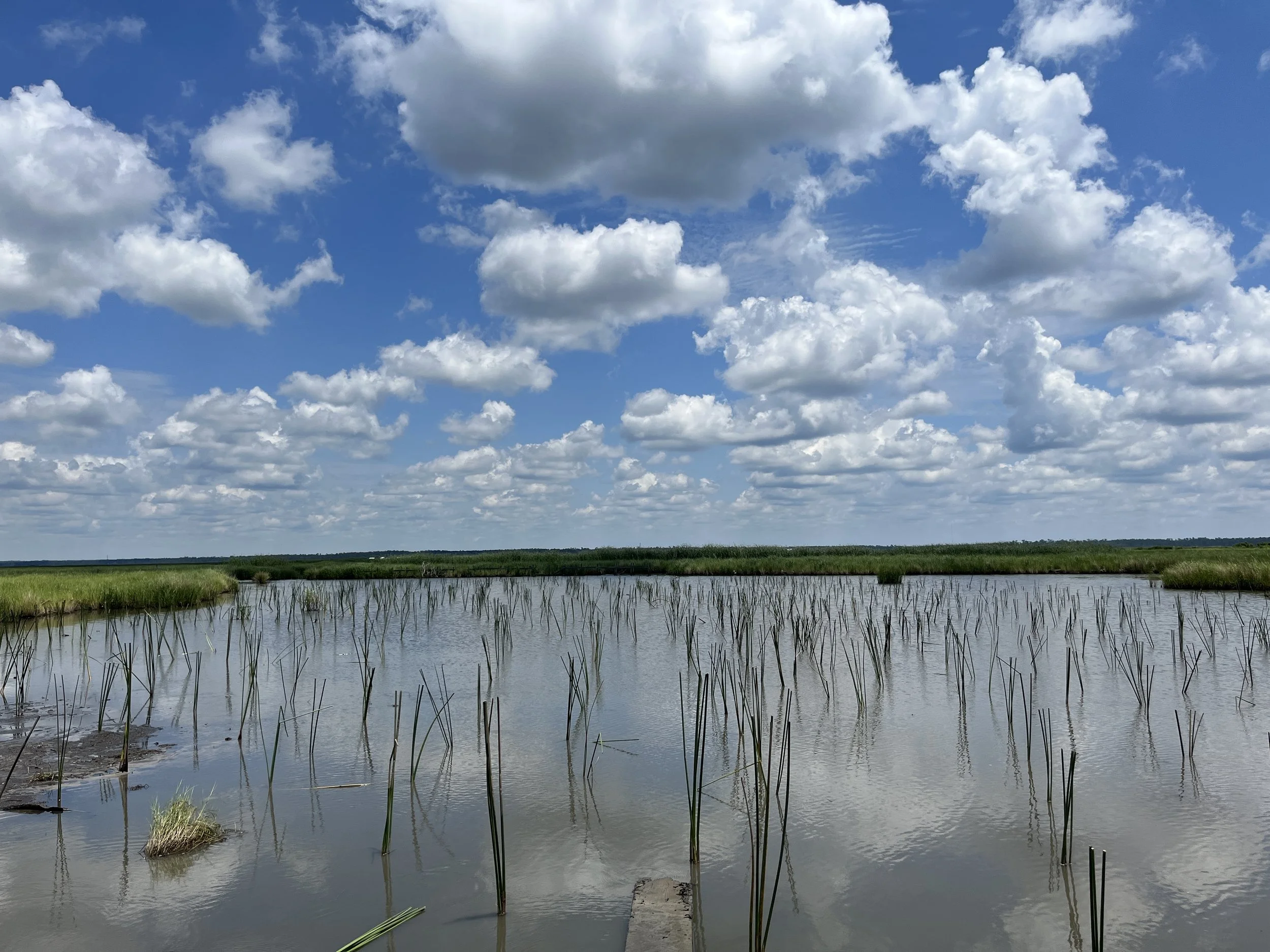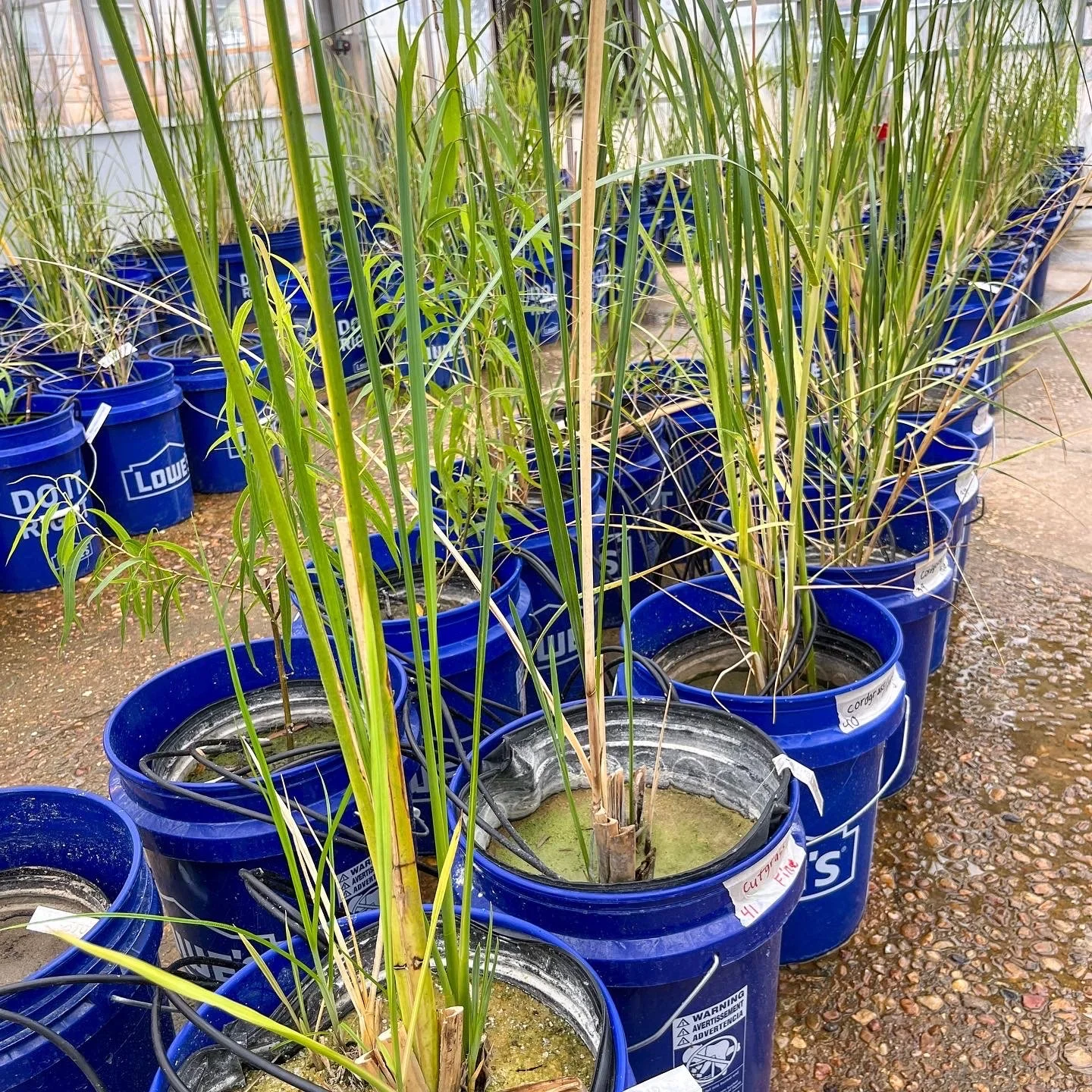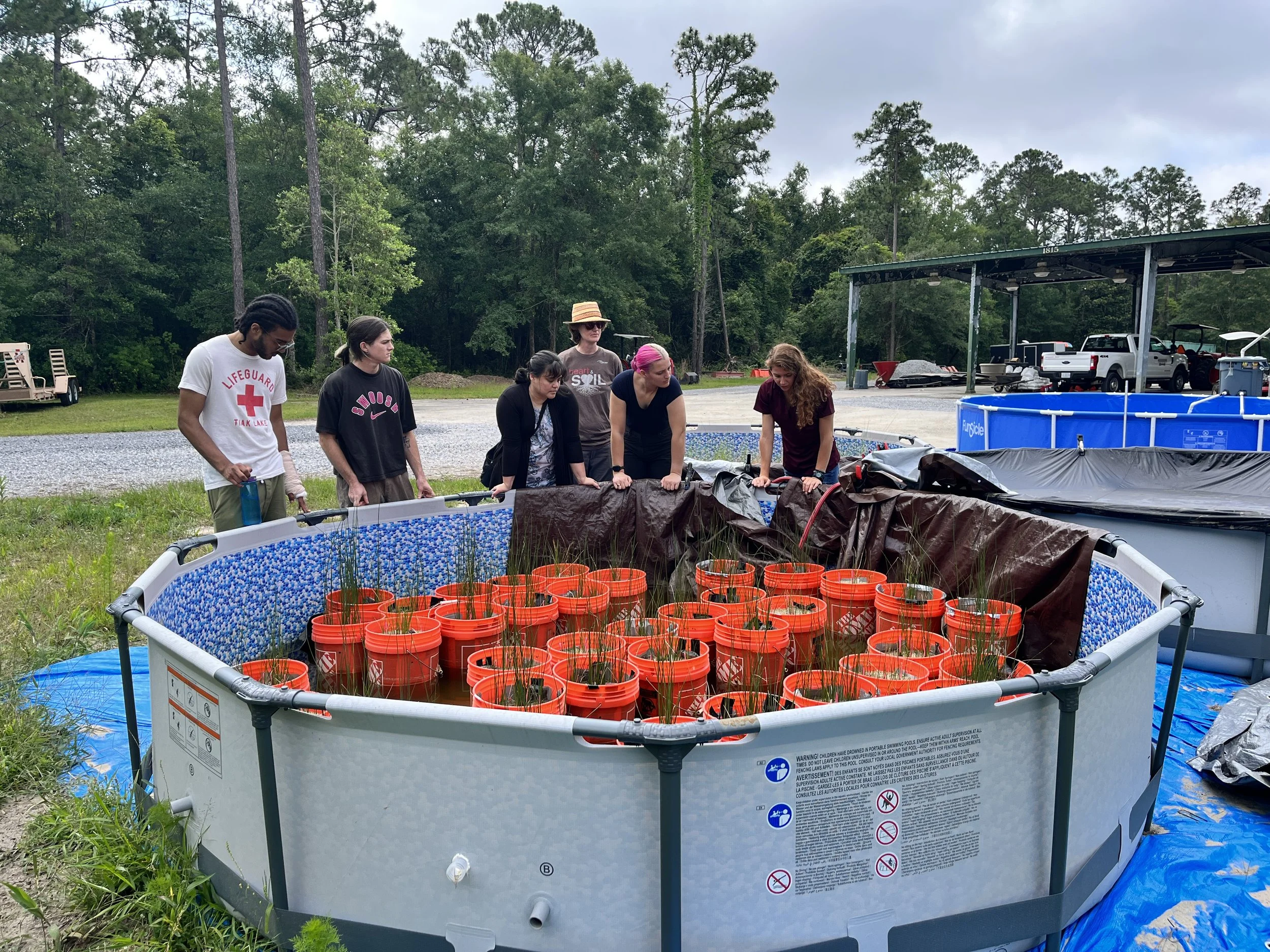
Ecological Testing
Greenhouse Marsh Experiments
Dr. Sunshine Van Bael and Dr. Emily Farrer led the ecological research to determine the feasibility of growing vegetation in recycled glass sand. The team grew Black willow (Salix nigra), Smooth cordgrass (Spartina alterniflora), Giant cutgrass (Zizaniopsis miliacea), Bald cypress (Taxodium distichum), and Giant bulrush (Schoenoplectus californicus) in recycled glass sand, dredged sand from the MS River, and a 50/50 mixture of the two.
The marsh grasses and trees grew just as well in the dredged sand treatment as they did in the mixed treatment. This is great news, as we expect the recycled glass sand to mix with the natural sediment over time.
Outdoor Mesocosm Experiment
Doctoral research assistant Ansley Levine created an outdoor mesocosm experiment to assess the ability of Black needlerush (Juncus roemerianus) and Saltmeadow cordgrass (Spartina patens) to grow in various mixtures of glass cullet versus fill soil. Results showed that J. roemerianus can survive in recycled glass sand, but growth declined as the proportion of sand increased. However, S. patens grew comparably, if not better, in treatments up to 75% glass sand. This is promising since we expect any recycled glass sand placed in the marsh to quickly mis with natural sediment.
Greenhouse Beach Experiments
Dr. Keith Clay has been exploring the ability of recycled glass sand to support life of plant species adapted to growing on sandy beaches and dunes. His lab has has grown Sea oats (Uniola paniculata), Railroad vine (Ipomoea pes-caprae), and Beach morning glory (Ipomoea imperati) in a controlled greenhouse setting. How these adapted plant species grow on glass sand substrate compared to natural beach sand will help determine how and where glass sand can be used for coastal restoration.
Field Beach Experiments
Dr. Jeremiah Henning’s lab conducted in-field experimentation with native dune plants and recycled glass sand on Dauphin Island, Alabama. His team grew Sea oats (Uniola paniculata), Railroad vine (Ipomoea pes-caprae), and Beach morning glory (Ipomoea imperati) in containers buried in the dunes to test how the plants would handle the harsh beach environment. While initial findings look promising, this research is still ongoing.
Animal Exposure Lab Experiments
Dr. Hank Bart is leading the team in a newly built, IACUC approved Animal Housing Facility to assess the effects of exposure of ecologically and commercially important fish and invertebrate species to recycled glass sand, a mixture of recycled glass and dredged sand, AquaQuartz (sold commercially as pool filter and aquarium sand), Quickcrete Play Sand, natural beach sand and no sand (control). There was no difference in mortality rates among the different mixtures. We look forward to sharing the detailed results after publication in January 2025.
Species
Fish species: Atlantic Croaker (Micropogonias undulatus), Gulf killifish (Fundulus grandis), Darter goby, (Ctenogobius boleosoma)
Invertebrates: Blue crab (Callinectes sapidus), Brown shrimp (Farfantepenaeus aztecus), Eastern Oyster (Crassostrea virginica), barnacle (Balanus subalbidus)
Animal Beach Experiments
Dr. Jeremiah Henning’s lab will measure the viability of glass sand as a substrate for coastal beach restoration by testing morphological and physiological stress responses as well as burrow architecture of a sandy-beach indicator species, the Atlantic ghost crab ((Ocypode quadrata), to glass sand substrates.
This experiment is still ongoing.






